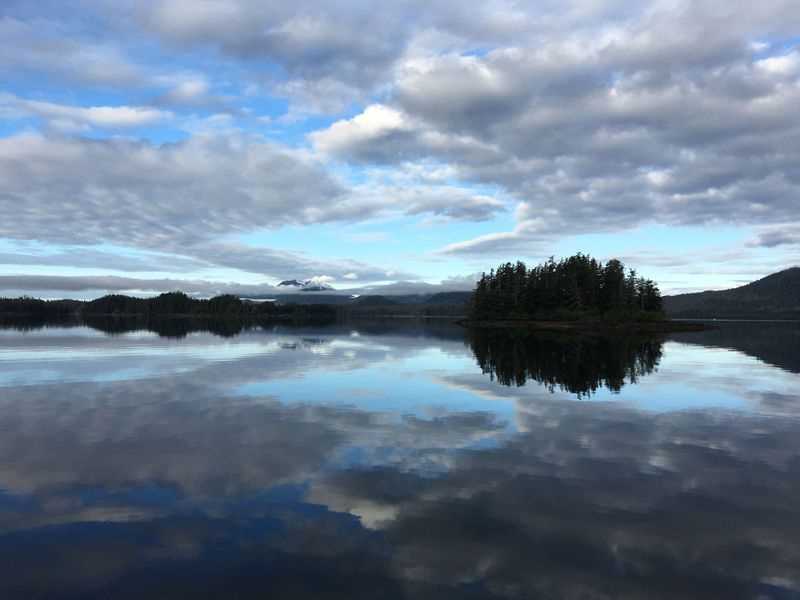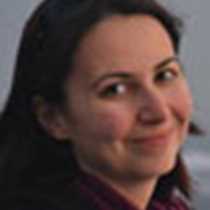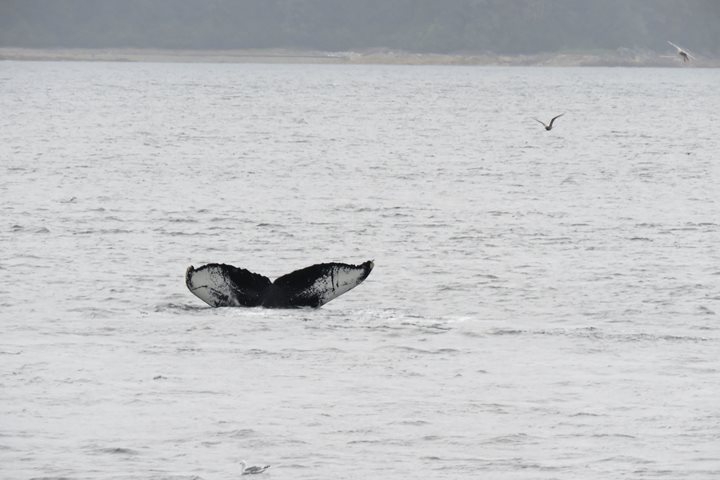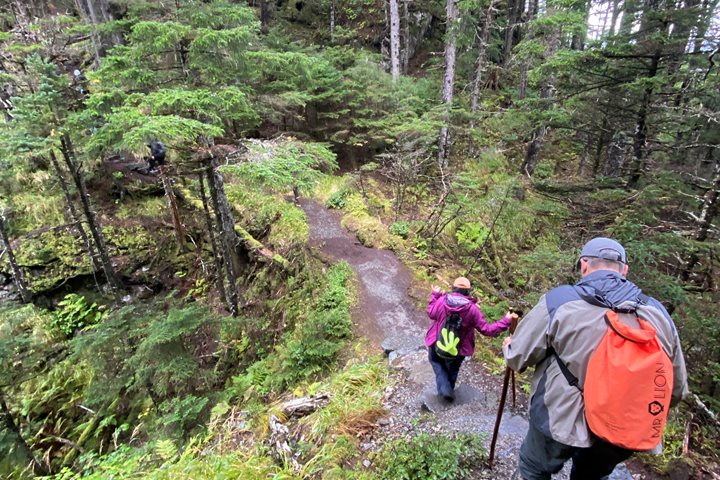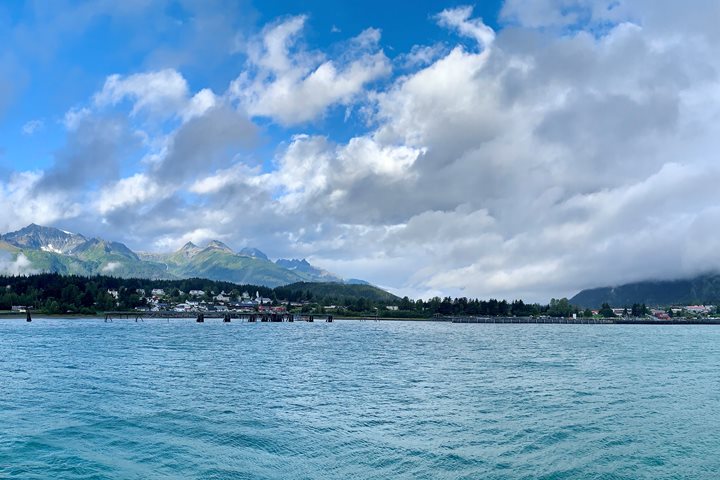We woke up today in the peaceful waters of DeGroff Bay, with uncharacteristically beautiful weather, and even the typically-hidden volcano of Mount Edgecumbe was visible. The mirror-like waters beckoned us to explore, and so some of us got into kayaks while others explored the forests and the intertidal zone on foot; we all enjoyed the richness of the wilderness. We got acquainted with a pristine piece of the temperate rain forest by meeting the usual suspects: Sitka spruce and western hemlock forming a towering canopy. The undergrowth inspired us with various plants and flowers just starting to bloom in the early spring. And the low tide offered us marvelous opportunities to marvel at the resilience of the purple crabs, Pacific blue mussels, barnacles, and sea stars that dotted the bay’s tidal flats. The afternoon provided for great wildlife-viewing from the ship, as we spotted two bears walking ashore nearby. Although we stayed pretty quiet as we whispered in awe from the bow, the bears would often turn towards us before returning to eat grass; with a sense of smell 60 times better than ours, they surely knew we were close. These bears are eager for the annual return of salmon, which not only nourish not the big brown bears here, but also more than a hundred species of plants and animals and plants in this ecosystem. Tomorrow we will explore one of the most spectacular places to view wildlife in Southeast Alaska: the Inian Islands, in hopes of seeing Steller sea lions, humpback whales, and sea otters!
9/5/2022
Read
National Geographic Sea Bird
Pavlof Harbor and Chatham Strait
Our final day aboard National Geographic Sea Bird began in Pavlof Harbor. The first coastal brown bear we sighted was a lone juvenile resting at the mouth of the stream, nestled amongst the rocks. We slowly headed to the falls to find a burly adult stalking salmon in the middle of the stream. As the season winds down, these bears are over double their spring weight. While they have been foraging all spring and summer on sages, grasses, berries, and more, the true calorie loading comes from their end of summer salmon feast. Every few minutes, this adult caught yet another salmon, only to gorge on the brains, eggs, and skin. The remaining bits are too muscly for the bears. Strolling along the edge of the stream after its nap, the juvenile joined in the salmon feast. While the adult patiently stalked its next salmon, the juvenile was less patient, often losing focus and staring around. It even appeared to avoid getting too wet by sitting, frog style, on a middle rock. A few minutes into our second round of bear sightings, we observed as a mother and two cubs approached! One quick swipe in the water, and this momma bear caught her first female salmon. She took a clean bite of the tail end, and out poured fresh salmon roe. The two cubs pushed in for a share of mom’s catch, each taking a chunk of the skin for themselves as well. While mom was willing to share, it seemed like one of the cubs was quite talented in the art of fishing. After a few tries, this new cub had already caught its first salmon. With a look to the right, the juvenile was still sitting above the rock, maybe afraid to intervene, or perhaps less of a hunter. Either way, the bear sat, still looking around and waiting for an easy target. We began this week with glacier carved fjords, stunning and close views of glaciers, and moments with marine mammals. We completed our journey at the stream along with the salmon. They come here to spawn and die, and their nutrients are recycled into the forest and animals around us. With such documentary worthy moments captured in our memories and in our photos, we headed back to the ship with an overwhelming sense of awe. I know that you are probably thinking nothing could make this day any better. Alas, this is Lindblad, and during the afternoon, we cruised the area in search of humpback whales. A few hours into our search, we found a relatively fast group of bubble-net feeding whales. With their surface feeding visible from the bow, naturalists and guests alike were shouting for joy. Later in the evening, we identified four of the six whales we sighted, learning that most of them have been sighted migrating to Hawaii for the winter. The evening closed with one final recap, our guest slide show, and conversations into the twilight. I could not think of a better send off from our time here in Southeast Alaska. Until next time! Photo caption: Visiting Pavlof Harbor and Chatham Strait.

